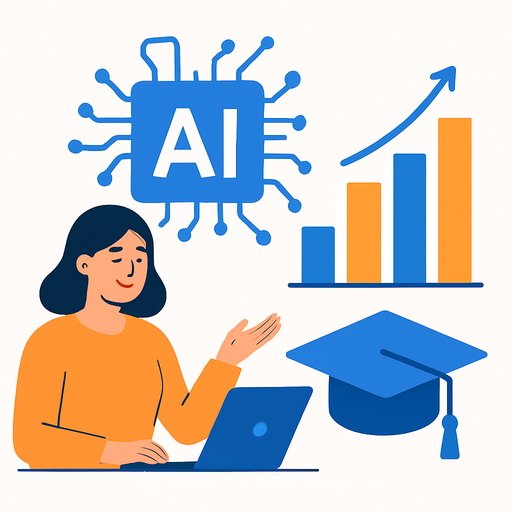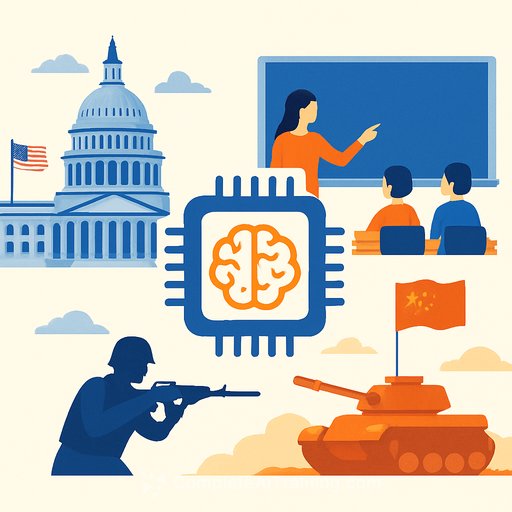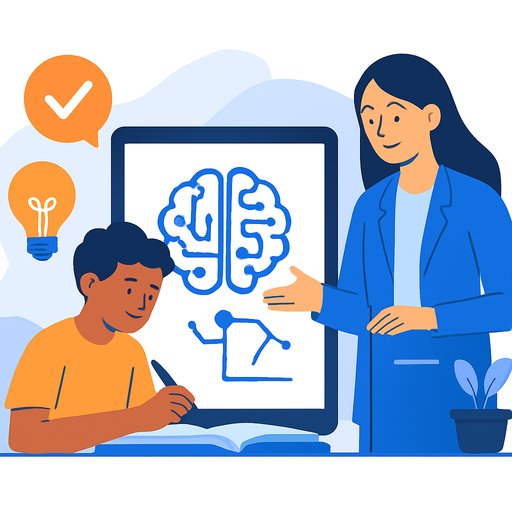Money Markets AI in Education: How Pearson Is Using Digital Learning to Drive Growth
Pearson signaled a stronger finish to the year with third-quarter sales up 4% and year-to-date growth at 2%. The story behind the numbers matters for educators: targeted use of AI is showing measurable gains in virtual learning outcomes and enrollment.
Leadership has shifted, with Omar Abbosh taking over as CEO in January 2024. The direction remains steady-focus on digital learning that improves student results and operational performance.
What's Working Inside Pearson
The Virtual Learning division led the quarter with 17% sales growth as student enrollments climbed. Pearson embeds AI tools directly into course materials and reports growing evidence that these tools improve student outcomes.
Recent launches include AI Literacy Modules to help students use AI effectively and responsibly, and Study Prep, a video platform that blends human tutors with AI study aids. The company also rolled out a chatbot within an English-learning app that serves roughly one million students in China.
Why Many AI Pilots Stall-and How Pearson Avoids It
A widely cited MIT analysis reported that about 95% of corporate AI pilots failed to deliver profit gains. The core issue wasn't the tech-it was a learning gap: weak process fit, poor workflow adaptation, and systems that didn't improve over time.
The organizations that made progress did three things well: they targeted narrow use cases, judged success by business outcomes, and integrated AI into existing operations. Pearson's approach mirrors this: specific products, clear outcomes, embedded in day-to-day learning experiences.
Practical Playbook for Schools, Colleges, and Training Providers
- Start small: pick one high-friction process (study prep, feedback, attendance follow-up, or tutoring triage).
- Define success up front: completion rates, pass rates, time-on-task, or tutor-response times.
- Integrate AI where students already learn: your LMS, course shells, or existing apps.
- Build AI literacy: teach students and staff how to prompt, verify, and cite. Provide usage norms by course.
- Pair human + AI: use AI for repetition and practice; reserve tutors for misconceptions and higher-order skills.
- Close the loop: collect interaction data, review error patterns weekly, and refine prompts/content.
- Protect privacy: set data retention rules, minimize PII, and document vendor assurances.
- Pilot, measure, iterate: eight to twelve weeks, a clear baseline, and a simple dashboard everyone can read.
- Plan for change: brief faculty on workflow changes, offer quick-start guides, and set office hours for support.
- Budget with outcomes: compare cost per successful credit, not just licensing fees.
- Evaluate vendors on fit: curriculum alignment, LMS integration, accessibility, and evidence of learning gains.
- Language learning opportunity: chatbots for practice and feedback at scale; keep human coaches for nuance.
Metrics That Matter
- Learning: pass/grade distribution, concept mastery, and time-to-proficiency.
- Engagement: attendance, time-on-task, and session completion.
- Support: tutor utilization, first-response time, and escalation rate to humans.
- Cost and capacity: cost per successful completion and instructor workload.
- Quality and safety: accuracy audits, citation rates, and content-flag incidents.
- Equity: outcomes by demographic group and accessibility usage.
Strategic Context
Pearson's shift didn't start with AI. Founded in the mid-1800s as a construction firm that later expanded into oil, banking, and electricity, the company pivoted to publishing in the 20th century and focused on education by the 1990s. After a stretch of profit warnings and layoffs, Andy Bird (CEO from October 2020 to early 2024) pushed a move from print to digital-first learning.
Today's AI rollouts build on that foundation: focused products, clear use cases, and integration with existing learning pathways.
What This Means for Education Leaders
AI pays off when it's embedded in the work, tied to outcomes, and continuously improved. The Pearson example is a simple message to teams: pick a narrow problem, wire it into your courses, measure what matters, and iterate.
If your staff needs structured upskilling in AI for teaching and operations, explore curated options by role and discipline here: AI courses by job. You can also scan the latest additions to stay current: Latest AI courses.
Your membership also unlocks:






